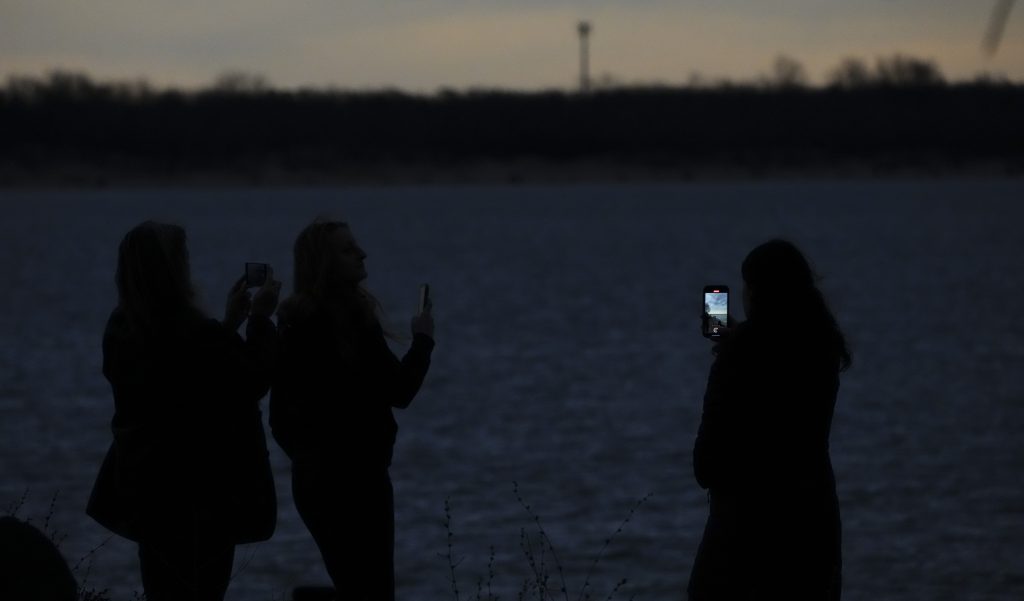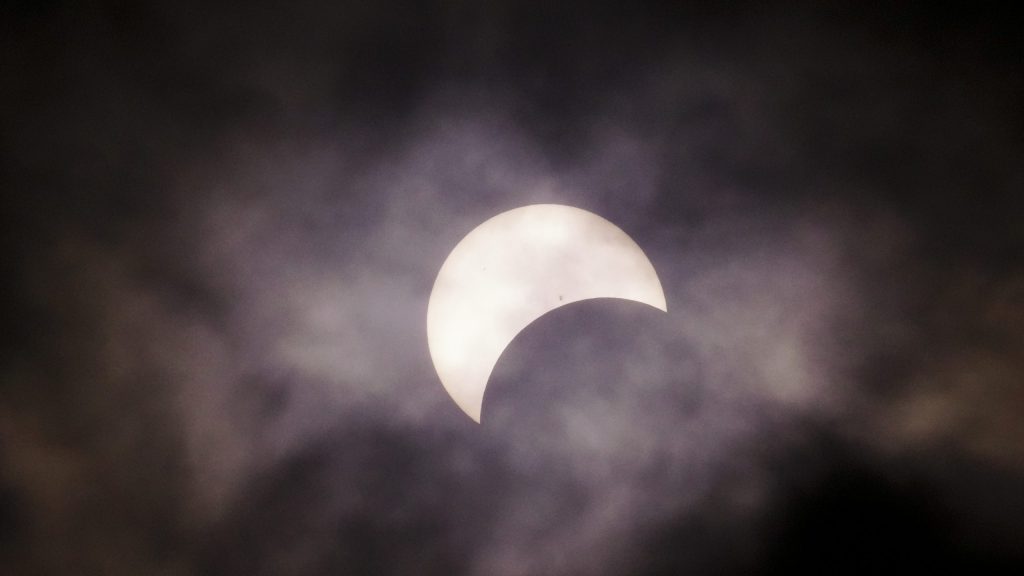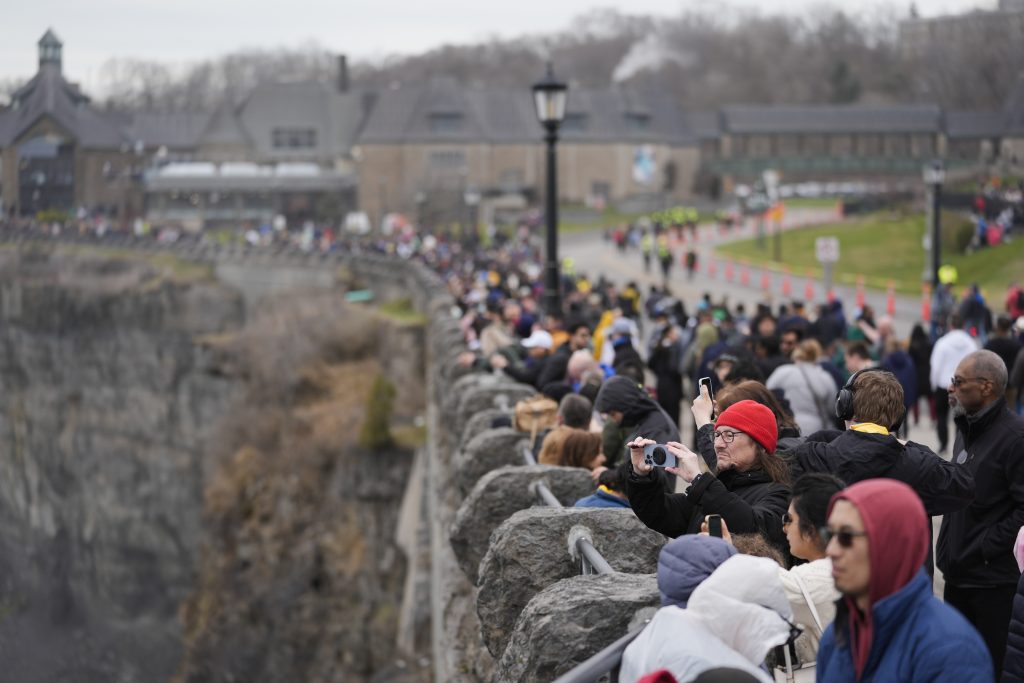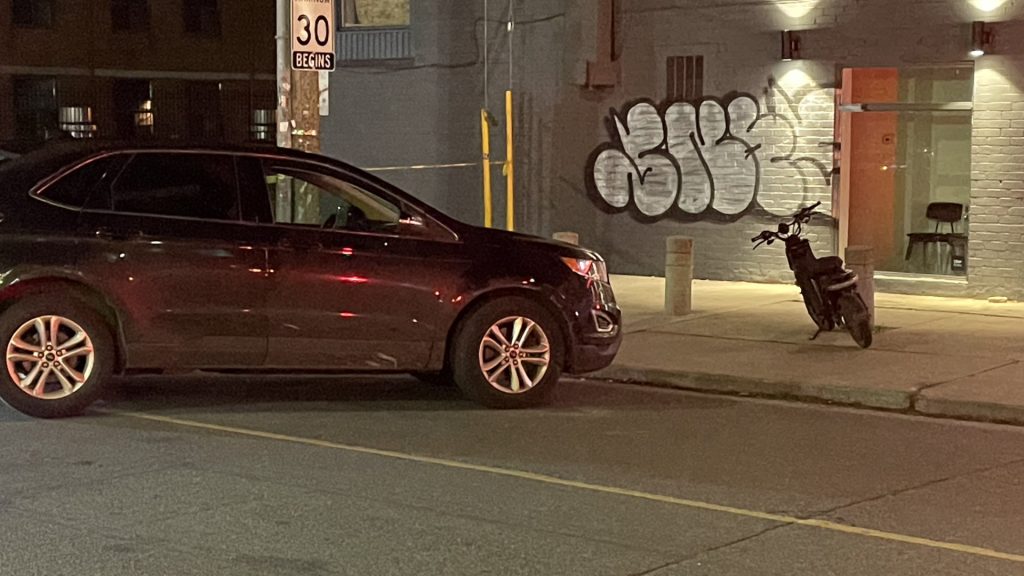Total solar eclipse amazes millions across North America
Posted April 8, 2024 10:53 am.
Last Updated April 9, 2024 11:10 am.
Earth-bound audiences turned skyward as the sun moved directly behind the moon on Monday, plunging parts of Canada into the darkness of a total solar eclipse and a moment of shared celestial awe.
Eclipse watchers in southwestern Ontario were the first on Canadian soil to experience the eclipse, before the path of totality moved into Quebec and Atlantic Canada, exiting Newfoundland about 30 minutes later.
Temperatures dipped, animals quieted, and rapturous crowds watched as the sun’s corona came into view behind the black disc of the moon. Stars lit up the darkened skies and streetlights went on for a short period of time.
This celestial dance, in which the moon, the sun and the Earth align, is possible thanks to some miraculous stage setting. The moon is about 400 times smaller than the sun, but it’s also about 400 times closer to the Earth – making both appear to be the same size in the sky.



Niagara Falls was the prime viewing location because it is nearly in the centre of the path of totality and the sun’s rays will be blocked for around three-and-a-half minutes. The blackout happened at 3:18 p.m., but the eclipse period will be between 2:04 p.m. and 4:32 p.m.
Around one million people descended on Niagara Falls and grey and cloudy skies broke momentarily as crowds caught a fleeting view of the total eclipse framed by the iconic waterfalls. Norma Rois, 58, was met with cheers when she yelled that it was her birthday during a moment of the totality.
“I felt like I was with family members the whole time. I don’t know their names, but we were cheering together,” she said.
Experts urged the public to take extra caution and avoid looking directly at the eclipse, warning of potential retina damage. They said certified solar eclipse glasses should be used and sunglasses don’t offer the protection needed.
Hirsh said while solar eclipses do happen from time to time, this is a unique one.
“These sorts of things they do happen, but you got to be in the right place in the world at the right time to see it. So the last time a total solar eclipse happened in this area was 1925 and it won’t happen again till 2144 so it’s going to be a while. That’s actually pretty good because on average it’s supposed to be every 400 years or so for a certain place.”
“This is rare. Everyone in North America America will get to see a partial and partial eclipses happen pretty regularly. Maybe you know once a year or so, but a total right here in our backyard is quite special.”
Niagara Falls declared a state of emergency leading up to the solar eclipse to prepare for the event. Niagara Falls Mayor Jim Diodati had said he expects the most visitors his city has ever seen in a single day.
Canada’s telecommunication companies have also been preparing their networks for a surge in demand in areas along the eclipse’s path. Companies said additional infrastructure, such as portable cell towers, would be deployed to certain areas to prevent possible disruptions.
Earth reflected on the moon
Dr. Laurie Rousseau-Nepton, an astrophysicist with the University of Toronto, tells CityNews the Earth will be reflected on the moon during the solar eclipse.
“So the moon is not going to be completely dark, it will shine from the earth glow and we’re going to see it. It’s like a mirror of our own light.”
“If we were to point a telescope and study the light coming from the moon at that moment, it would be the light coming from our atmosphere first that is reflected, then on the moon, and then back to us. We can look at that and study the composition of the upper layers of the atmosphere coming from earth. So it’s actually a science tool as well.”
She also explained what the eclipse represents for Indigenous communities.
“There’s very different views but what strikes me in Canada is that many communities see eclipses as a sign of peace, a moment where members of the same family meet in the sky. And it’s also some things that we also something that we also live in community on the ground observing it and being just mesmerized by it.”
While the next total solar eclipse in Canada is expected to pass through western provinces in 20 years, the phenomenon only happens in any given location roughly once every 360 years by some estimates.
Some areas have waited even longer.
Crowds in Kingston, Ont., which last fell under a total solar eclipse almost 700 years ago, cheered and howled as totality moved in. Volunteers hastily told people to put their eclipse glasses back on as the sun reemerged.
“You feel like you’re part of the universe in motion,” said Carole Giangrande. “There’s no human experience that can match it.”
Giangrande and Brian Gibson have been chasing solar eclipses for 45 years, their first dating back to Gimli, Man., in 1979. But the Toronto couple said the chance to capture a solar eclipse never goes out of style.
“So much in the world right now is so rotten, it gives you such a feeling of positivity and people enjoying themselves, and wonder,” Giangrande said of watching an eclipse. “It’s beautiful.”
With files from Nick Westoll of CityNews










